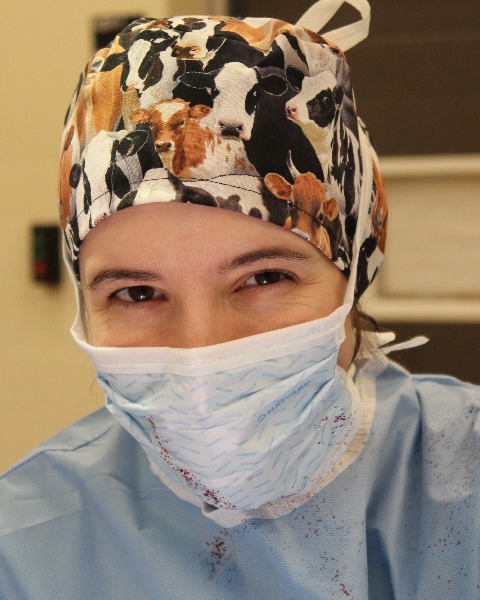Back
abs: Lactate Measurement in Long Bone Fractures in Cattle
Large Animal
abs: Lactate Measurement in Long Bone Fractures in Cattle
Cutting Edge Advancements in Farm Animal Surgery
Friday, October 14, 2022
3:00pm – 3:15pm
Location: C126

Caroline Constant, DVM, MSc, MENG, DACVS-LA, DECVS
AO Foundation | AO Research Institute Davos
Abstract Presenter(s)
Long bone fractures account for up to 10% of the caseload of ruminants at referral centers. To avoid animal suffering and surrender a successful outcome, a prompt decision must be made to treat or euthanize the animal. The objective of this study was to determine the prognostic value of lactate concentrations in cattle diagnosed with a long bone fracture. A prospective, cohort study was conducted on 43 cattle admitted for long bone fracture treatment to a veterinary hospital (July 2016-Dec 2018). Upon admission, lactate concentration was measured in systemic venous blood and locally in capillary blood in the fractured and contralateral limbs and assessed for outcome prediction. The cut-off value was determined by maximizing the Youden index from ROC curves. Multivariate logistic regression was employed to verify whether higher lactate concentrations compared with the cut-off value was an independent risk factor for poor outcomes at 30-day or 3-year after admission. A poor outcome was associated with higher capillary lactate concentration in the fractured limb (p=0.0001) and a greater difference with systemic blood (p=0.005). Measurement difference between capillary lactate in the fractured limb and systemic blood was the best predictor of 30-day mortality (AUC:0.9517, p<0.0001) with a cut-off value of lactate difference ≥2.4mmol/L (sensitivity=0.80, specificity=0.965). Multivariate analysis revealed that this cut-off value was an independent risk factor of outcome (OR:112.0, P<0.0001). In conclusion, lactate metabolism is locally impaired in fractured limbs of non-surviving or at higher complication risk cattle, which may help identify patients at high risk for poor outcomes.
